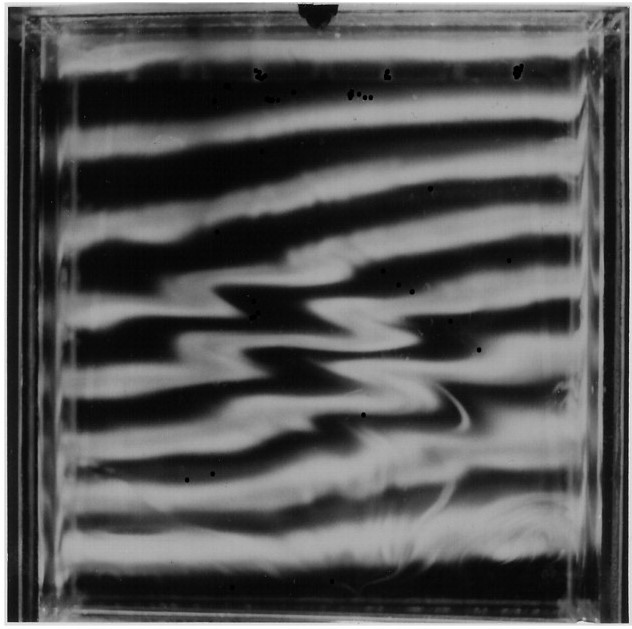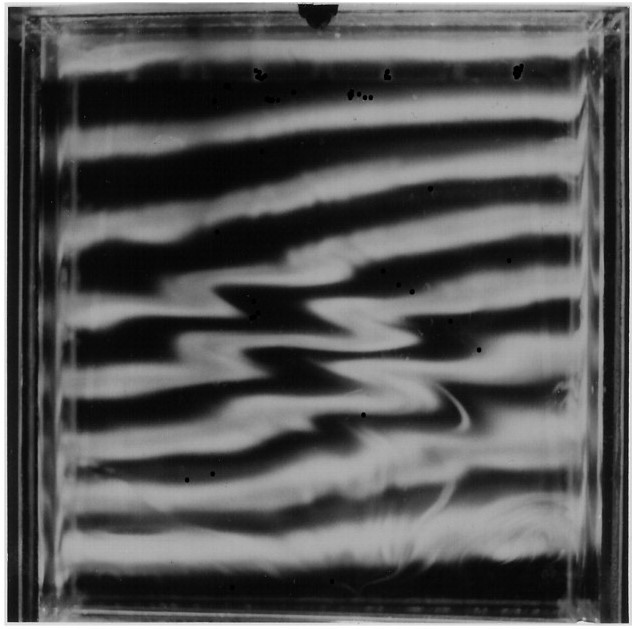This photo taken by Dominique Benielli and Joel Sommeria was published in the Journal of Fluid Mechanics in 1998 as a study on instabilities in atmospheric gravity waves. I enjoyed this piece a lot because the simplicity in the experiment is more than enough to exemplify what the researchers were attempting to capture. All they do in this experiment is inject two fluids of different densities in oscillating fashion to reproduce the atmospheric phenomena known as gravity waves, and then one of those fluids is also dyed with high-contrast liquid. The resulting flow is then illuminated by a laser sheet and photos were taken at different time points. While the photo is simple black and white, it clearly identifies the wave breaking event that was studies in their paper which led to a better understanding of how instabilities grow in the atmosphere.



2 Comments. Leave new
Third Prize – I think baroclinic torque caused by fluids of different densities is wild. I think this is a phenomenon that is observed a lot in the atmosphere and influences different weather events. This picture does a good job of showing this on a smaller scale.
I think this image deserves Third Prize. While it is not the most captivating image to look at in my opinion it is a perfect example of using fluids to prove out a hypothesis and further the understanding of phenomena in nature.